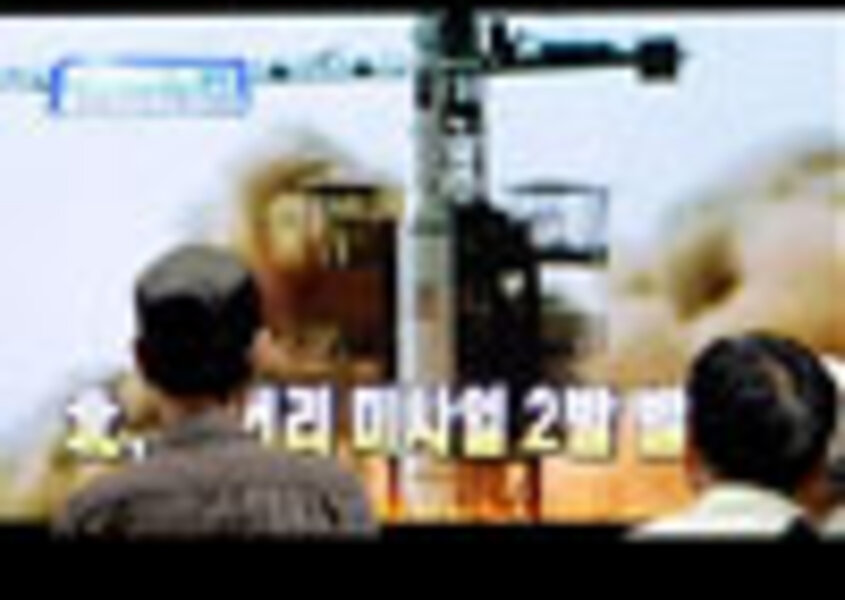Could a North Korean missile reach Hawaii?
Loading...
| Washington
Could North Korea hit Hawaii with a missile, if it wanted to?
In theory, yes. Pyongyang has ballistic missile technology that technically, if it worked to perfection, could throw a small payload across the 7,100 kilometers or so that separate the Korean peninsula from Honolulu, according to a US Congressional Research Service (CRS) report.
But North Korea has tested its most advanced long-range missiles only a few times, and in each instance, something major has gone wrong. The warhead would be so tiny it would do little damage – if it survived the heat of reentry, which is doubtful. (It wouldn't be nuclear. North Korea remains years from developing that kind of capability.)
Accuracy would be problematic. The missile would be as likely to hit ocean as land.
Bottom line: For the moment, the chance of North Korea endangering Hawaii, or any other US territory, may be quite small.
"It makes no sense they would do that," says David Wright, co-director of the Union of Concerned Scientists' Global Security Program.
Last month, Japanese media reported that Pyongyang might shoot a long-range intercontinental ballistic missile (ICBM) in the direction of Hawaii around the July 4 holiday. Shortly after, the Pentagon deployed antimissile interceptors and a sea-based tracking radar near Hawaii.
President Obama said in a broadcast interview in late June that the US military "is fully prepared for any contingencies."
Then, on Thursday, the North Koreans shot off a series of four short-range missile tests, raising tensions in the region. After all, South Korea and Japan – not to mention US military facilities in Guam and Okinawa – are much closer to North Korea than any US state.
Pyongyang's missile pursuit
North Korea first began working on medium-range ballistic missiles in the late 1980s, according to US intelligence reports. In the early 1990s, it began development of its two major longer-range ICBM efforts, known as Taepodong-1 and Taepodong-2.
In 1998, the Commission to Assess the Ballistic Missile Threat to the United States, headed by Donald Rumsfeld, predicted that North Korea and Iran would be able to inflict major damage on the US within five years of a decision to acquire ICBM technology. The clock was already ticking, implied the report.
That did not happen. But there is little question that North Korea continues to seek long-range missile technology, according to a recent National Intelligence Council report.
Unsuccessful tests, so far
Putting together an ICBM is a difficult undertaking. Countries that have done it successfully have had to launch many tests to perfect the technologies.
North Korea's longest-range missile effort, the Taepodong-2, has been fully tested only twice. The first, in 2002, failed after 40 seconds. The second, in April this year, apparently did not succeed in putting a small satellite into low earth orbit.
It did manage to travel some 3,200 km from the launch site, but its third stage fell into the Pacific with its satellite payload.
The Taepodong-1 has a somewhat better testing record, but not by much. It has an estimated range of from 3,800 to 5,900 km, putting US bases in Guam and Okinawa, as well as Japan, within range, according to the CRS.
But this distance depends on the size of the missile's warhead. A large 1,000-kilogram payload could cut the range in half.
The Taepodong-2, by contrast, could deliver a substantial payload across an estimated 4,000 to 4,300 km, according to CRS.
But Honolulu is 7,100 km from North Korea. Seattle is 7,900 km away, and Washington 10,700 km.
To strike Hawaii and targets on the US mainland, "some analysts believe that the Taepodong 2's payload would need to be reduced to 200 – 300 kg," concludes the CRS report, which was updated in February.
Some experts, however, say that the April test involved more advanced technology. The April launch appears to have used a second stage identical to a single-stage Soviet sea-launched ballistic missile, says Mr. Wright of the Union of Concerned Scientists.
But even if Pyongyang has access to more sophisticated technology, it may also be easier for the US and its allies to constrain further missile development.
If North Korea depends on foreign sources for major components, "this would imply that North Korea's domestic missile development program is much more limited than is commonly assumed," says Wright.





